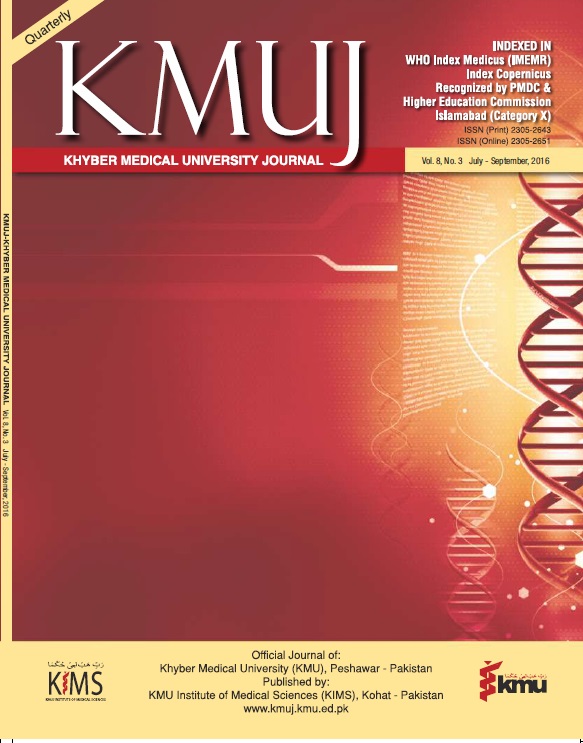SIGNIFICANCE OF STUDENT’S FEEDBACK ON IMPROVING THE TEACHING PRACTICES OF THE FACULTY
Main Article Content
Abstract
OBJECTIVE: To determine the significance of students’ feedback on improving teachers’ performance.
METHODS: The students’ feedback on teachers’ performance was analyzed for 38 faculty members from 2011 to 2014 including feedbacks from four semesters. The means and standard deviations were used to determine the trend in the overall performance of the teachers. One sample T-test was used to determine the significance of these trends in the teachers’ performance for same semester means, whereas the paired T-test was applied for comparison of means between the semesters.
RESULTS: The analysis showed an overall improvement in the performance of teachers analyzed for the three out of four semesters while there was a slight decline in the fourth semester from 89.9±5.0 to 86.6±6.1, at 95% confidence level. However, the dip does not cross over the benchmark of 70% set by the Quality Enhancement Cell of the University.
CONCLUSION: The teachers’ evaluation processes have shown a positive impact in their overall performance and are effective mechanism for keeping the teachers and students to work for the collective objective towards their learning. The reasons for the slight decline in the fourth semester have remained unearthed in the current study and need to be explored through qualitative studies.
KEY WORDS: Student Feedback Questionnaire (Non-MeSH), Quality Enhancement Cell (Non-MeSH), Feedback (MeSH), Students (MeSH), Faculty (MeSH), Teaching (MeSH); Medical Education (MeSH)
Article Details
Work published in KMUJ is licensed under a
Creative Commons Attribution 4.0 License
Authors are permitted and encouraged to post their work online (e.g., in institutional repositories or on their website) prior to and during the submission process, as it can lead to productive exchanges, as well as earlier and greater citation of published work.
(e.g., in institutional repositories or on their website) prior to and during the submission process, as it can lead to productive exchanges, as well as earlier and greater citation of published work.
References
Nasser F, Fresko B. Faculty views of student evaluation of college teaching. Assess Eval High Educ 2002; 27(2): 187-98.
Shane B. On the use of student questionnaires. High Educ Rev 1994; 26(3): 57-64.
Neger LJ, Viney W, Riedel GR. Student rating of teaching effectiveness: use and misuse. The Midwest Quarterly; Pittsburg 1997; 38(2): 218–34.
Marsh HW. Students' evaluations of university teaching: Research findings, methodological issues, and directions for future research. Int J Educ Res 1987; 11(3): 253-388.
Aleamoni LM. Typical faculty concerns about student evaluation of teaching. New Directions for Teaching and Learning 1987; 31: 25-31.
Thorley L, Gregory RD, Gregory R. Using Group-based Learning in Higher Education: Psychology Press; 1994.
Zafar F. Establishment of Quality Enhancement Cells at Public Sector Universities. In: Agency QA, editor. 2006.
Paracha SA, Khan AS, Shah Z, Wahab K. Satisfaction of the pre-clinical students regarding current anatomy curriculum and anatomy teachers of KUST Institute of Medical Sciences (KIMS), Kohat. KUST Med J 2011;3(2): 45-51.
Kember D, Leung DY, Kwan K. Does the use of student feedback questionnaires improve the overall quality of teaching? Assess Eval High Educ 2002; 27(5): 411-25.
Brinko KT. The practice of giving feedback to improve teaching: what is effective? J High Educ 1993; 64(5):574-93.
